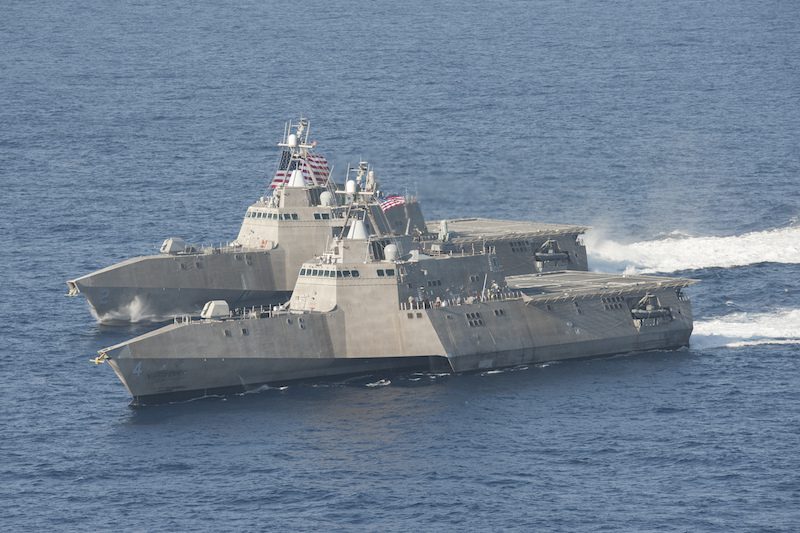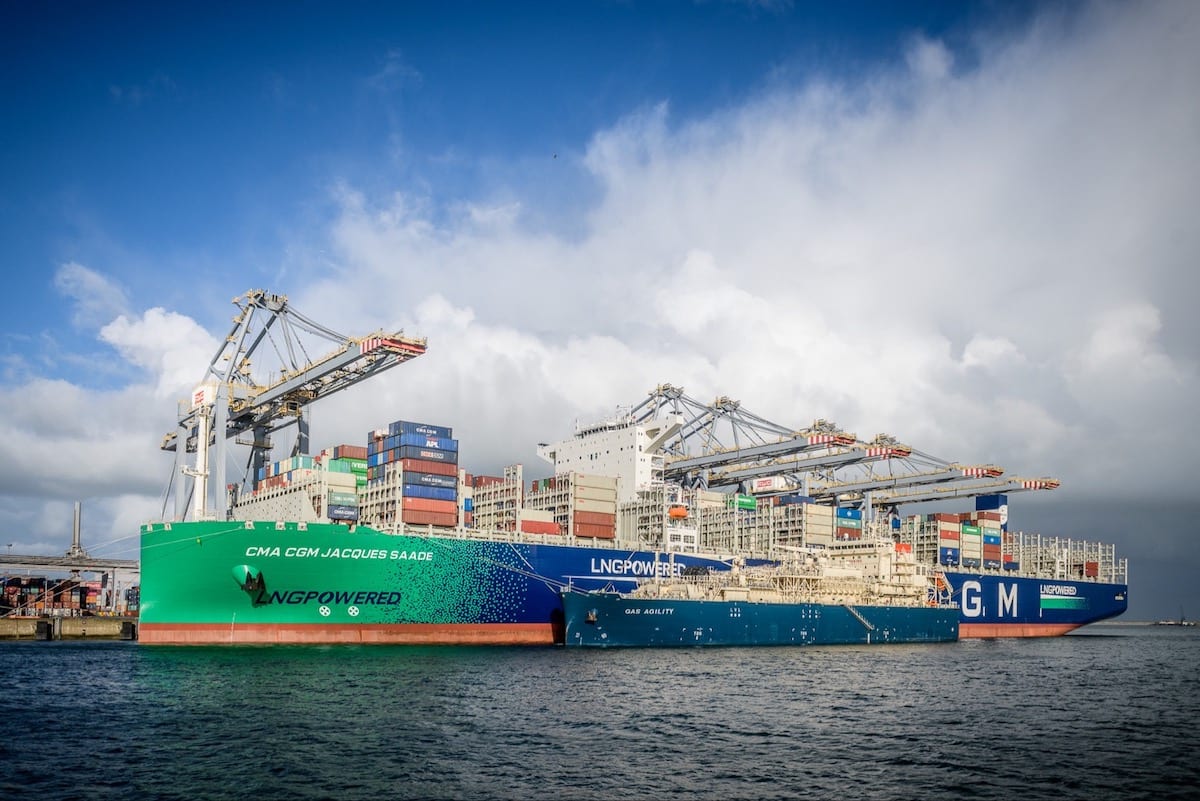The littoral combat ships USS Independence (LCS 2), back, and USS Coronado (LCS 4) underway in the Pacific Ocean. U.S. Navy Photo
By Tony Capaccio
(Bloomberg) — The U.S. Navy’s Littoral Combat Ship struggled in drills at sea to fend off a swarm of small attacking vessels like the Iranian boats it could encounter in the Persian Gulf, according to the Pentagon’s chief weapons tester.
The fast-attack boats were ultimately defeated by the USS Coronado during three mock engagements in August and September to test its guns and targeting gear. But in two exercises an attacker came too close, penetrating the vessel’s “keep-out” zone, Pentagon testing director Michael Gilmore said in his annual report on major weapons submitted to congressional defense committees.
While Gilmore didn’t mention Iran as a threat, its Islamic Revolutionary Guards operate small boats with crews trained for swarming attacks in the contested waters of the Persian Gulf. The Coronado’s “inability to defeat this relative modest threat beyond ‘keep-out’ range routinely under test conditions raises questions about its ability to deal with more challenging threats,” Gilmore added.
Lockheed, Austal
The report adds to questions about the vulnerability and reliability of the ships, designed in two versions by Lockheed Martin Corp. and Austal Ltd. and intended to operate in shallow coastal waters. Defense Secretary Ash Carter last month directed the Navy to truncate to 40 ships what was to be a 52-ship mix of original LCS vessels and upgraded models that would be better armed. Twenty-six vessels are now under contract in a $23 billion program.
In the exercise, the crew of the Coronado “expended a large quantity” of 57mm and 30mm ammunition “while contending with repeated network communications faults that disrupted” information flowing to gun systems and weapon elevation flaws that occurred more than a dozen times, disrupting firings, he said. The Coronado, the initial Littoral Combat Ship, was built by General Dynamics Corp. before Austal became lead contractor for that version of the vessel.
Gilmore also cited reliability issues with both versions of the ships, from troubles with generators and air-conditioning units to “cybersecurity deficiencies that significantly degrade operational effectiveness.”
That’s a particularly serious problem for the Littoral Combat Ship because its ability to survive in combat depends on communicating with better-armed vessels and support on shore through a maritime battle network linked by computers and sensors.
The lightly manned vessel also relies on ship-to-shore and satellite communications to help crews monitor the ship’s condition, perform repairs and order medical supplies. At least 245 functions traditionally performed aboard a Navy ship will be done onshore.
The Freedom-class version built by Bethesda, Maryland-based Lockheed isn’t “operationally suitable because many of its critical systems supporting ship operations, core mission functions and mission package operations are unreliable,” Gilmore wrote.
Before the Lockheed-built USS Fort Worth departed in November 2014 for a 16-month deployment to Asia, testing failures of subsystems “fundamental to ship operations,” such as mobility and maneuvering, “caused the ship to return to port for repairs or reduced readiness at sea for 42 and 36 days respectively,” Gilmore wote.
Although data collected to date on the Independence-class version built by Henderson, Australia-based Austal is incomplete, many of its systems “have significant reliability problems,” Gilmore wrote.
In tests at sea, the Coronado’s crew “had difficulty keeping the ship operational as it suffered repeated failures of the ship’s diesel generators, water jets and air conditioning unit,” he said.
©2016 Bloomberg News

 Join The Club
Join The Club











